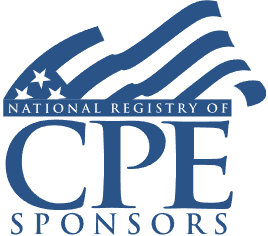Closer Connection Exception: Determining Tax Home; Treaty Tie-Breakers, Form 8840

Course Details
- smart_display Format
Live Online with Live Q&A
- signal_cellular_alt Difficulty Level
Intermediate
- work Practice Area
Tax Preparer
- event Date
Tuesday, July 8, 2025
- schedule Time
1:00 PM E.T.
- timer Program Length
110 minutes
-
BARBRI is a NASBA CPE sponsor and this 110-minute webinar is accredited for 2.0 CPE credits.
-
BARBRI is an IRS-approved continuing education provider offering certified courses for Enrolled Agents (EA) and Tax Return Preparers (RTRP).
This course will examine how non-U.S. individuals can avoid residency status for U.S. income tax purposes by establishing a closer connection to a foreign country or by utilizing the treaty tie-breaker provision of an income tax treaty the United States has entered into with another country. Our seasoned international tax advisers will explain the eligibility and filing requirements related to the closer connection exception and treaty tie-breaker provision.
Faculty

Mr. Diosdi is an experienced trial lawyer who regularly defends individuals and corporations in matters involving tax controversies and government regulatory enforcement. He also has vast experience assisting clients who find themselves with unreported or undeclared bank accounts outside the U.S. Mr. Diosdi is acknowledged as one of the nation’s leading experts in contesting penalties associated with failing to file FBARs. In addition to representing clients in tax controversy matters, he advises clients on U.S. international tax matters, including tax planning with respect to their structures and transactions. In particular, Mr. Diosdi has experience advising on issues relating to tax treaties, pre-immigration planning for foreigners moving to the U.S., expatriation planning, tax planning for foreign companies doing business in the U.S., and subpart F income minimization. More recently, he has focused on helping clients navigate U.S. tax reform, including the regimes for Global Intangible Low-Taxed Income and Foreign-Derived Intangible Income, and the new limitations on foreign tax credits.

Mr. Leeds focuses his practice on the tax consequences of a variety of financial products and strategies, including digital assets, private funds, exchange-traded funds, litigation finance, life settlement, banking and insurance. His experience includes both exchange-traded and over-the-counter derivative transactions, and strategies for the efficient utilization of tax attributes—such as net-operating losses. Mr. Leeds regularly works with financial institutions on developing products and the related tax reporting considerations. He also advises businesses and individuals in establishing operations and relocating to Puerto Rico and has a substantial practice in private credit transactions. Mr. Leeds is well-known for his extensive writings on capital markets tax issues.
Description
U.S. residents pay tax on worldwide income, while nonresidents are generally only subject to tax on U.S. source income. This is reason enough to take a second look at taxpayers who meet the substantial presence test, as the substantial presence test determines whether a foreign national who does not hold a U.S. green card is considered a resident for U.S. tax purposes. However, an individual who would otherwise meet the substantial presence test in the current year may be considered a nonresident for such year if the individual is present in the U.S. for less than 183 days during the current year, maintains a tax home in a foreign country during the entire current year, and has a closer connection during the current year to one foreign country in which the individual maintains a tax home, than to the United States. In order to claim the closer connection exception, an individual must file Form 8840, Closer Connection Exception Statement for Aliens, either with a timely filed U.S. income tax return or separately, to explain the basis of the individual's claim that they satisfy the requirements of the closer connection exception.
Furthermore, even when a foreign national does not satisfy the closer connection exception and is considered a U.S. resident under the substantial presence test, the individual may also be a resident of a foreign country under the foreign country's domestic tax rules. If the foreign country in which the individual is a resident has an income tax treaty with the United States, the treaty tie-breaker rules may enable the individual to be treated as a U.S. nonresident even though the individual would otherwise be considered a U.S. resident under the substantial presence test.
Individuals with ties to other countries can dramatically reduce tax and compliance obligations by utilizing the closer connection exception or the treaty tie-breaker provision. As such, international tax practitioners need to be familiar with the qualification requirements for these valuable exceptions.
Listen as our panel of international income tax experts explains the eligibility and filing requirements related to the closer connection exception and treaty tie-breaker provision, including how to determine a taxpayer's tax home, the facts and circumstances that support the claim that an individual has a closer connection to a foreign country, how to apply the treaty tie-breaker provision of an income tax treaty, and the applicable forms that are required to be filed.
Outline
- Nonresidents and the substantial presence test
- Determining closer connection
- Tax home
- Form 8840
- Dual residents and treaty tie-breaker provisions
- Best practices
Benefits
The panel will cover these and other critical issues:
- Specific countries that have income tax treaties with the U.S. and tie-breaker rules
- How nonresidents meet the closer connection exception when they are in the U.S. for less than 183 days in the current year
- How to complete Form 8840 and when it should be filed
- Late exceptions and steps to take for a late-filed Form 8840
- Specific actions by individuals that result in ineligibility for the closer connection exception
NASBA Details
Learning Objectives
After completing this course, you will be able to:
- Determine what specific actions prohibit the use of the closer connection exception
- Identify individuals who would benefit from the closer connection exception
- Ascertain when treaty tie-breaker rules should be applied to an alien to avoid resident status
- Decide when to file Form 8840
- Field of Study: Taxes
- Level of Knowledge: Intermediate
- Advance Preparation: None
- Teaching Method: Seminar/Lecture
- Delivery Method: Group-Internet (via computer)
- Attendance Monitoring Method: Attendance is monitored electronically via a participant's PIN and through a series of attendance verification prompts displayed throughout the program
- Prerequisite: Three years+ business or public firm experience preparing complex tax forms and schedules, supervising other preparers or accountants. Specific knowledge and understanding of international taxation including residency determination, foreign entity classifications, application of treaty benefits, as well as GILTI, Subpart F, and the related Section 250 deductions.

Strafford Publications, Inc. is registered with the National Association of State Boards of Accountancy (NASBA) as a sponsor of continuing professional education on the National Registry of CPE Sponsors. State boards of Accountancy have final authority on the acceptance of individual courses for CPE Credits. Complaints regarding registered sponsons may be submitted to NASBA through its website: www.nasbaregistry.org.

Strafford is an IRS-approved continuing education provider offering certified courses for Enrolled Agents (EA) and Tax Return Preparers (RTRP).
Related Courses

Form 1041 Schedule D: Reporting Capital Gains for Trusts and Estates
Available On-Demand

Closer Connection Exception: Determining Tax Home; Treaty Tie-Breakers, Form 8840
Thursday, April 10, 2025
1:00 PM E.T.
Recommended Resources
How CPE Can Bridge the Gap Between What You Know and What You Need to Know
- Career Advancement